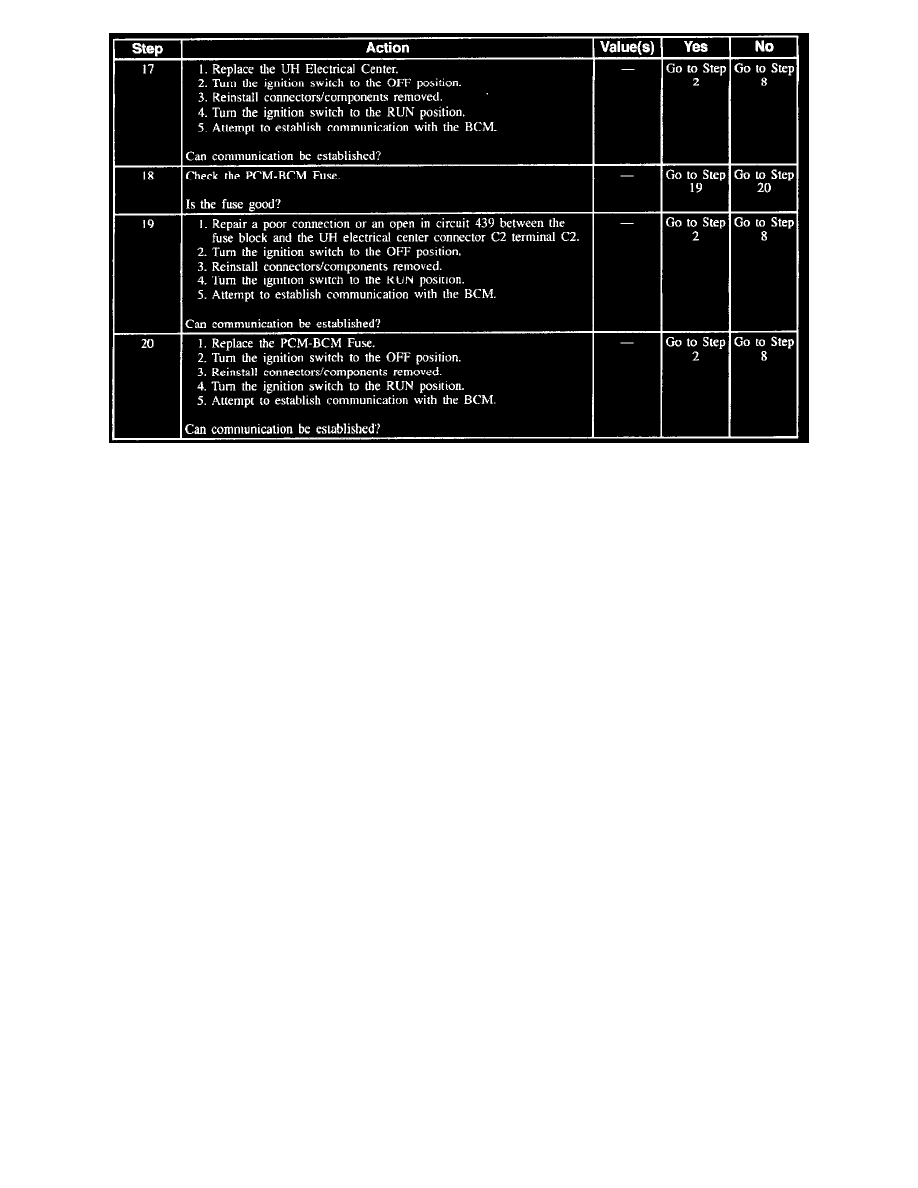Regal V6-3.8L VIN K (1997)

Diagnostic System Check (Part 3 Of 3)
CIRCUIT DESCRIPTION
The Body Control Module (BCM) Diagnostic System Check is an organized approach to identify problems associated with the BCM. This check
must be the starting point for any BCM complaint, and will direct you to the next logical step in diagnosing the complaint. The BCM is very
reliable component and is not likely the cause of the malfunction. Most system complaints are linked to faulty wiring and connectors, and
occasionally to components. Understanding the computer system and using the tables correctly will reduce diagnostic time and prevent
unnecessary parts replacement.
DIAGNOSTIC AIDS
^
The following conditions may result in an intermittent operation of the BCM with no DTC stored:
-
Any condition which results in the interruption of power to the BCM.
-
Out of range battery or ignition voltage specification. Normal battery or ignition voltage: 9-16V.
-
A loose or damaged ground(s).
-
An open or shorted serial data link.
^
An intermittent failure in the electronic system may be very difficult to detect and to accurately diagnose. The BCM tests for different
malfunctions under different vehicle conditions. For this reason, a thorough test drive is often needed in order to repeat a fault condition. If the
system malfunction is not repeated during the test drive, a good description of the complaint may be very useful in locating an intermittent fault
condition. Faulty electrical connections or wiring causes most intermittent problems. When an intermittent condition is suspected, check the
suspected circuits for the following conditions:
-
Poor mating of connector halves or backed out terminals.
-
Improperly formed or damaged terminals.
-
Wire chafing.
-
Poor wire to terminal connections. Dirty or corroded terminals.
-
Damage to connector bodies.
^
Use a J 35616-A whenever a diagnostic procedure requests probing or checking a terminal. Using this will ensure that no damage to the terminal
will occur and will give an idea of whether contact tension is sufficient.
^
If the DTC is a history DTC, the problem may be intermittent. Perform the tests shown while moving related wiring and connectors. This can often
cause the malfunction to occur. Perform a thorough inspection of all related wiring and connectors pertaining to the history DTC stored. Refer to
Intermittent and Poor Connections. See: Intermittents and Poor Connections
^
Exit all scan tool tests before cycling the ignition switch to the OFF position to on unless the scan tool instructions direct otherwise. Follow the
operating instructions in the scan tool operator's manual. Failure to follow these instructions may set DTCs, cause vehicle system malfunctions, set
false DTCs, or cause scan tool malfunctions.
^
DTC P1626 will set in the Powertrain Control Module (PCM) when the ignition switch is in the RUN position with the BCM disconnected.
TEST DESCRIPTION
^
Numbers below refer to the step numbers on the diagnostic table.
1. Determines if communications can be established with the BCM.
2. Checks for stored BCM DTCs.
3. Determines whether communications can be established with other systems connected to the same serial data link.
